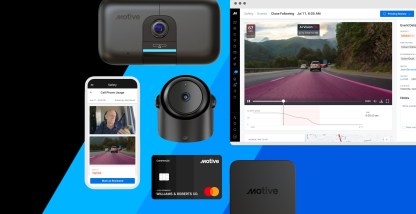The intricacies of running a fleet can be challenging. Fleet managers need to be experts at managing diverse issues. From selecting the right vehicles to making sure that their fleet is fully compliant with the rules and regulations of the trucking industry, fleet managers shoulder many responsibilities.
One of the biggest responsibilities is to manage and minimize the costs associated with running a fleet.
This responsibility is crucial because managing the cost of running a fleet directly impacts the trucking company’s profit. If fleet managers aren’t careful, their company can experience monetary loss on a large scale.
Cost-related challenges when running a fleet
The unpredictability of fuel costs
When it comes to planning, budgeting, and managing fuel costs, fleet managers need to consider many factors. They need to look into (and possibly correct) their drivers’ driving habits. Managers also need to check vehicles for possible maintenance issues that might be resulting in extra fuel consumption. Additionally, bad route management can also result in the more-than-necessary consumption of fuel.
Managing costs — because of the unpredictability of fuel costs — become extremely challenging for fleet managers, especially if they don’t have a powerful tracking tool. For example, there’s no way a fleet manager can determine if truck drivers have poor driving habits that are contributing to fuel wastage.
Fleet management software, combined with ELDs, can solve this problem.
CSA scores and violation fees
The consequences of having a terrible CSA score can be catastrophic to a trucking company. Companies with bad CSA scores have to pay thousands of dollars in violations. Shippers also avoid working with them thinking they are a risky company to work with since their CSA scores are so horrible.
A crucial element of running a fleet that should never be neglected by trucking companies is compliance with regulations. Several estimates indicate the trucking industry paid over $15 million worth of hours-of-service fines in the month of January 2017.
It’s also important to note that the figure above is based on HOS violations alone. When you include costs associated with roadside accidents due to driver fatigue and other reasons, you can imagine how costly being non-compliant can be.
The true cost of ELDs
Because the ELD mandate is still in effect, the deadline for everyone to be ELD compliant remains the same — December 18, 2017.
Because of all the myths circulating about how expensive ELDs are, a good number of trucking companies are now under the impression that being ELD compliant isn’t an affordable option.
Thankfully, that isn’t the case.
While there are, in fact, some manufacturers offering ELDs for over $5000 in a span of 3 years (roughly amounting to $1600+ per year), there are ELD vendors, such as Motive, who offer ELDs for much less than that.
While there are costs associated with having ELDs, they don’t necessarily have to break the bank to be ELD compliant. If anything, once ELDs are installed, trucking companies can save money from reduced fuel wastage and the amount they pay for HOS violations.
Lowering the costs of running a fleet
While there are several strategies that fleet managers can employ to lower the cost of running a fleet, I have listed six proven tips that have worked for several trucking companies.
- Install ELDs to reduce administrative expenses. Through ELDs, fleet managers and drivers won’t have to generate reports manually. Through the ELD’s logbook app, drivers can quickly generate reports that roadside inspectors need. On the fleet manager’s end, they can use the web-based fleet management dashboard to generate IFTA reports in seconds.
- Select the best possible routes. With a working GPS feature, drivers and fleet managers can carve out the best route to reach to a destination, which can minimize fuel expenditures.
- Improve driving habits. With the help of ELDs, fleet managers can easily monitor drivers and identify bad driving habits that may result in additional fuel expenses as well as roadside accidents. For example, if a fleet manager notices that a driver is idling or making sudden acceleration, he can be notified with proper feedback. Monitoring and notifying drivers can help them to avoid repeating mistakes. Which results in a safer driving experience as well as more profits.
- Avoid HOS violations and their associated fees. Because ELDs give audible alarms when drivers are nearing a violation, they can easily avoid potential HOS violations.
- Take care of vehicles. ELDs are capable of detecting vehicle faults and maintenance issues and notifying drivers and fleet managers in real time. This allows managers to prepare or order replacement parts before drivers have even arrived at the home office. Lesser downtimes result in higher productivity and increased profits.
- Avoid high driver turnover. Because it costs, on average, over $5000 to replace a single truck driver, it pays to nurture your relationship with them. Treat your drivers with respect and try to show appreciation whenever possible.
What’s next?
Minimizing the actual cost of running a fleet should be one of your top priorities.
A good fleet management system and the right ELD solution can help you reduce costs and increase profits. Request a free demo of the Motive ELD solution and learn how.
Call 844-325-9230 if you have any questions.









